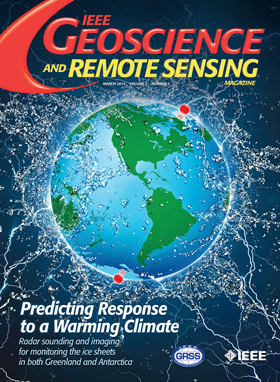Close-Range Remote Sensing of Forests: The state of the art, challenges, and opportunities for systems and data acquisitions
IF 16.2
1区 地球科学
Q1 GEOCHEMISTRY & GEOPHYSICS
引用次数: 11
Abstract
Remote sensing-based forest investigation and monitoring have become more affordable and applicable in the past few decades. The current bottleneck limiting practical use of the vast volume of remote sensing data lies in the lack of affordable, reliable, and detailed field references, which are required for necessary calibrations of satellite and aerial data and calibrations of relevant allometric models. Conventional field investigations are mostly limited to a small scale, using a small quantity of observations. Rapid development in close-range remote sensing has been witnessed during the past two decades, i.e., in the constant decrease of the costs, size, and weight of sensors; steady improvements in the availability, mobility, and reliability of platforms; and progress in computational capacity and data science. These advances have paved the way for turning conventional expensive and inefficient manual forest in situ data collections into affordable and efficient autonomous observations.森林近距离遥感:系统和数据采集的现状、挑战和机遇
在过去几十年中,基于遥感的森林调查和监测变得更加经济实惠和适用。目前限制大量遥感数据实际使用的瓶颈在于缺乏负担得起、可靠和详细的实地参考资料,而这些资料是对卫星和航空数据进行必要校准以及对相关异速模型进行校准所必需的。传统的实地调查大多局限于小规模,使用少量观测。近距离遥感在过去二十年中得到了快速发展,即传感器的成本、尺寸和重量不断降低;平台的可用性、移动性和可靠性稳步提高;以及计算能力和数据科学方面的进展。这些进展为将传统的昂贵和低效的人工森林原位数据收集转变为负担得起和高效的自主观测铺平了道路。
本文章由计算机程序翻译,如有差异,请以英文原文为准。
求助全文
约1分钟内获得全文
求助全文
来源期刊

IEEE Geoscience and Remote Sensing Magazine
Computer Science-General Computer Science
CiteScore
20.50
自引率
2.70%
发文量
58
期刊介绍:
The IEEE Geoscience and Remote Sensing Magazine (GRSM) serves as an informative platform, keeping readers abreast of activities within the IEEE GRS Society, its technical committees, and chapters. In addition to updating readers on society-related news, GRSM plays a crucial role in educating and informing its audience through various channels. These include:Technical Papers,International Remote Sensing Activities,Contributions on Education Activities,Industrial and University Profiles,Conference News,Book Reviews,Calendar of Important Events.
 求助内容:
求助内容: 应助结果提醒方式:
应助结果提醒方式:


